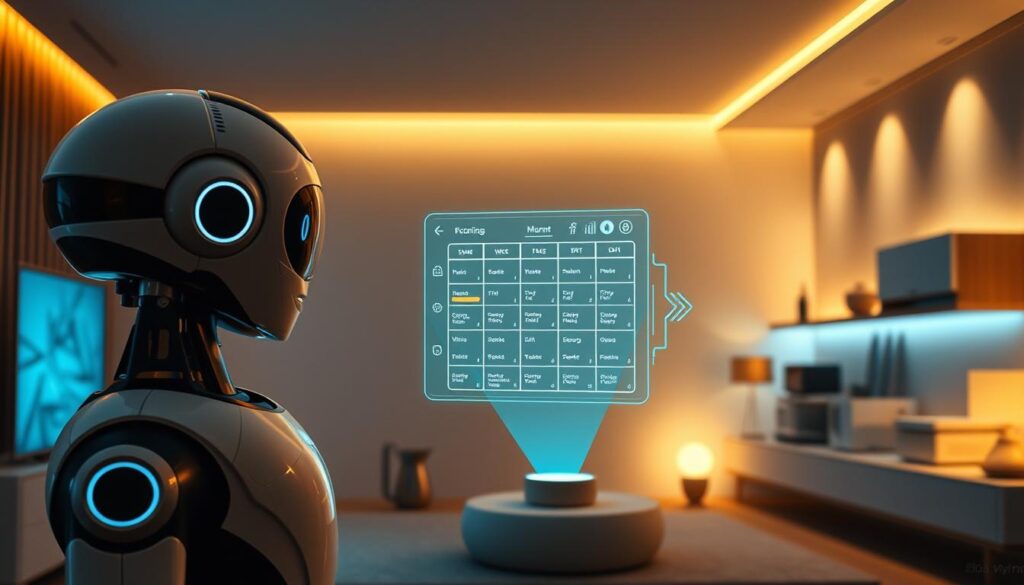Imagine a home that adjusts its temperature, lighting, and security based on your daily routines, making your life more comfortable and energy-efficient. With the advent of advanced automation sensors, this is now a reality for many homeowners. These innovative devices are transforming the way we live, work, and interact with our living spaces.

The integration of smart home technology into our daily lives is not just a trend; it’s a movement towards a more sustainable and convenient lifestyle. As we explore the world of new AI sensors for home automation, we’ll delve into their setup process, their role in power saving, and their associated costs.
Key Takeaways
- Understanding the benefits of advanced automation sensors in smart homes.
- Learning how to set up new AI sensors for home automation.
- Discovering how these sensors contribute to energy efficiency.
- Exploring the cost implications of integrating smart home technology.
- Gaining insights into the future of smart home automation.
The Evolution of Smart Home Sensors
Traditional home sensors have been transformed by AI, enhancing their functionality and efficiency. This transformation has paved the way for more sophisticated home automation solutions.
How AI Transforms Traditional Sensors
AI integration enables sensors to become more intelligent and adaptive. They can now learn and adjust to a homeowner’s preferences, improving overall energy efficiency.
Key Benefits for Homeowners
The key benefits include enhanced convenience, improved safety, and optimized energy consumption. With AI-driven iot devices, homeowners can enjoy a more streamlined and efficient living experience.
New AI Sensors for Home Automation: Setup Process
Getting started with AI sensors for home automation involves a simple setup process that integrates seamlessly with your existing smart home systems. This ease of integration is one of the key benefits of these advanced sensors.
Step-by-Step Installation Guide
To install your new AI sensors, follow these steps:
- Unbox and physically place the sensors in desired locations.
- Download and install the companion app on your smartphone.
- Follow in-app instructions to pair the sensors with your smart home hub.
- Configure sensor settings according to your preferences.
This process is designed to be straightforward, ensuring that you can start enjoying the benefits of your AI sensors quickly.
Integrating with Existing Smart Home Systems
One of the strengths of new AI sensors is their ability to integrate with a wide range of smart home systems. Whether you use Amazon Alexa, Google Home, or Apple HomeKit, these sensors can be easily incorporated into your existing setup, enhancing your home’s automation capabilities.
Troubleshooting Common Setup Issues
If you encounter issues during setup, such as connectivity problems or sensor malfunctions, refer to the troubleshooting guide provided with your sensors. Common solutions include restarting your sensors or checking for firmware updates.
By following these guidelines, you can ensure a smooth setup process for your new AI sensors, unlocking the full potential of your home automation system.
Power-Saving Capabilities and Energy Efficiency
With the integration of AI, home automation sensors now offer unprecedented energy efficiency and power-saving capabilities. These innovative sensors are designed to minimize energy consumption without compromising performance, making them an attractive option for homeowners looking to reduce their energy bills and environmental footprint.
Advanced Battery Management Features
The new AI sensors come equipped with advanced battery management features that significantly prolong battery life. These features include intelligent power management systems that monitor and control battery usage, ensuring that the sensors operate efficiently and effectively.
AI-Driven Power Optimization
AI-driven power optimization is another key feature of these sensors. By analyzing usage patterns and adjusting power consumption accordingly, these sensors can optimize energy usage, leading to significant energy savings over time.
Real-World Energy Savings Examples
Homeowners who have adopted these AI sensors have reported notable energy savings. For instance, by optimizing lighting and heating systems, some users have seen reductions in their energy bills by up to 20%. These real-world examples demonstrate the potential of AI sensors to make a significant impact on energy efficiency.
Conclusion: Balancing Costs and Benefits
New AI sensors for home automation bring numerous benefits, including enhanced smart home technology and significant energy savings. The initial costs may seem high, but long-term advantages lead to substantial cost savings.
The setup process is straightforward, and integrating these sensors with existing systems is easy. Advanced battery management features and AI-driven power optimization ensure efficient operation, reducing energy consumption.
Adopting new AI sensors enables homeowners to enjoy a more streamlined, efficient, and cost-effective smart home experience. These innovative sensors play a key role in shaping the future of home automation.
Weighing the costs and benefits involves considering the potential return on investment. New AI sensors optimize energy usage, reduce waste, and provide a significant financial benefit over time, making them a worthwhile investment for homeowners upgrading their smart home technology.
FAQ
What are the benefits of using new AI sensors for home automation?
The benefits include improved energy efficiency, enhanced smart home technology, and cost savings through optimized power consumption. These sensors can also automate various tasks, making it easier to manage your home.
How do I set up new AI sensors for home automation?
Setting up new AI sensors involves a step-by-step installation process, integrating them with your existing smart home systems, and troubleshooting any common setup issues that may arise. Refer to the manufacturer’s guide for specific instructions.
Can AI sensors be integrated with existing smart home systems?
Yes, most new AI sensors are designed to be compatible with existing smart home systems, allowing for seamless integration and enhanced functionality.
How do AI sensors contribute to power saving and energy efficiency?
AI sensors optimize power consumption through advanced battery management features and AI-driven power optimization, leading to significant energy savings and prolonged battery life.
What are the costs associated with adopting new AI sensors for home automation?
The costs include the initial purchase price of the sensors, any installation costs, and potentially, subscription fees for certain services. However, the long-term energy savings can offset these costs.
Are new AI sensors difficult to install?
The installation process is generally straightforward, with many sensors being designed for DIY installation. However, some may require professional assistance, depending on the complexity of your smart home setup.
How do I troubleshoot common issues with my AI sensors?
Troubleshooting involves checking the sensor’s power source, ensuring it’s properly integrated with your smart home system, and consulting the user manual or manufacturer’s support resources for specific guidance.
Can AI sensors help reduce my energy bills?
Yes, by optimizing energy consumption and automating energy-intensive tasks, AI sensors can contribute to significant reductions in your energy bills over time.


